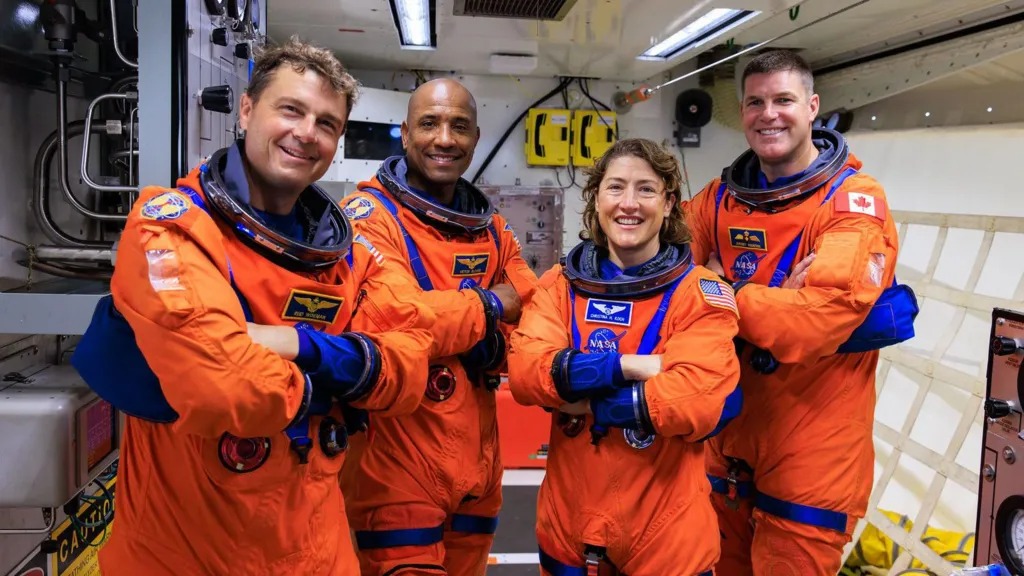
Nasa Delays Astronaut Moon Mission to 2026
The US space agency, Nasa, has announced another delay in its ambitious Artemis program, pushing the planned Artemis II mission to April 2026. This mission aims to send astronauts around the Moon without landing, marking a crucial step in returning humans to the lunar surface.
The decision comes after safety concerns emerged regarding the Orion spacecraft’s heat shield, which suffered unexpected damage during re-entry in the uncrewed Artemis I test. Engineers are working on modifications to address the issue, with Nasa Administrator Bill Nelson emphasizing:
“The safety of our astronauts is our North Star. We do not fly until we are ready.”
Heat Shield Challenges and Mission Timeline
The Orion capsule’s heat shield, designed to withstand the intense heat of atmospheric re-entry, showed cracks, excessive charring, and fragment loss after its first test flight. Engineers believe that altering the spacecraft’s re-entry trajectory could solve the problem. However, additional testing and analysis require time, prompting the delay.
With Artemis II now scheduled for 2026, the subsequent Moon landing mission, Artemis III, has been pushed to mid-2027—marking a significant shift from its original 2026 target.
Lunar Rivalry with China
The delay has heightened competition between Nasa and China, which plans its first crewed Moon landing by 2030. Despite the setbacks, Nelson remains confident that the Artemis program will maintain its lead:
“We plan to launch Artemis III in mid-2027, well ahead of the Chinese timeline.”
The success of the Artemis program is crucial for maintaining US leadership in space exploration.
Criticism of the Space Launch System (SLS)
The Artemis program relies on the Space Launch System (SLS), which has faced criticism for being costly and slow to develop compared to private sector solutions like SpaceX’s reusable Starship. This dynamic could shift further with the incoming Nasa administrator, Jared Isaacman, who has strong ties to SpaceX and its founder Elon Musk.
What’s Next for Artemis?
Nasa remains committed to its vision of establishing a sustainable human presence on the Moon as a precursor to Mars missions. Despite the delays, Artemis II represents a critical milestone for testing astronaut safety and advancing lunar exploration.
Stay updated with the latest developments from Nasa and the Artemis program here. For insights on space exploration and beyond, visit Kenkou Land.





